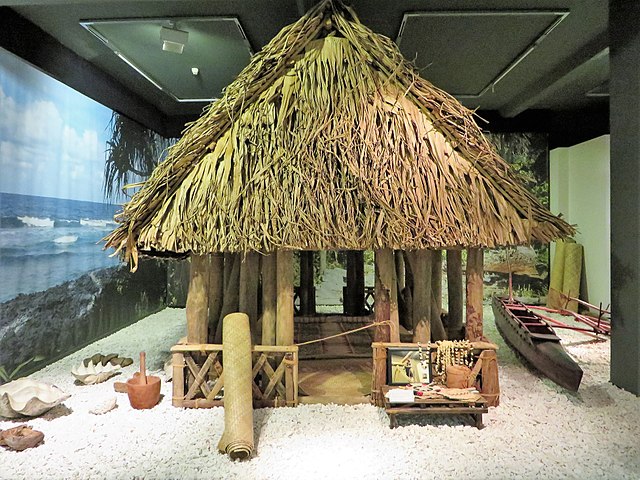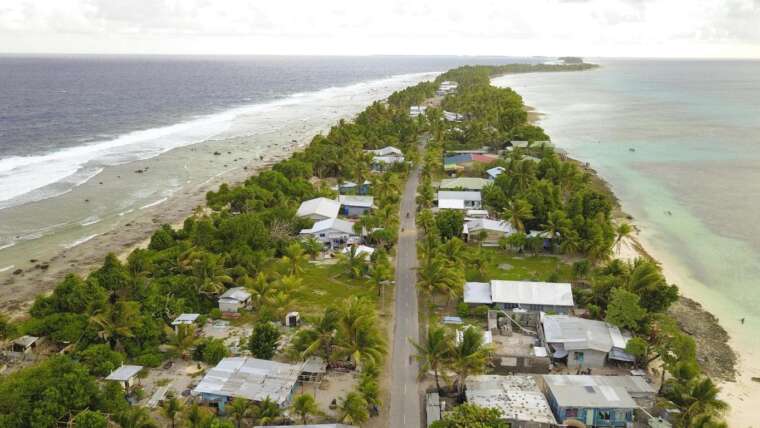Timeless Tuvalu!
Tuvalu, in the South Pacific, is an independent island nation within the British Commonwealth. Its 9 islands comprise small, thinly populated atolls and reef islands with palm-fringed beaches and WWII sites. Off Funafuti, the capital, the Funafuti Conservation Area offers calm waters for diving and snorkelling among sea turtles and tropical fish, plus several uninhabited islets sheltering sea birds.
Welcome To Timeless Tuvalu
Our Paradise Is Waiting
As one of the smallest and most remote nations in the world, this unspoiled corner of the Pacific offers a peaceful, and non-commercialized environment that is ideal for rest and relaxation. The spectacular marine environment consisting of a vast expanse of ocean interspersed with atolls, magnificent lagoons, coral reefs and small islands all provide a unique South Seas ambiance.
History of Tuvalu
The first settlers were from Samoa and probably arrived in the 14th century AD. Smaller numbers subsequently arrived from Tonga, the northern Cook Islands, Rotuma, and the Gilbert Islands. Niulakita, the smallest and southernmost island, was uninhabited before European contact; the other islands were settled by the 18th century, giving rise to the name Tuvalu, or “Cluster of Eight.”
Europeans first discovered the islands in the 16th century through the voyages of Álvaro de Mendaña de Neira, but it was only from the 1820s, with visits by whalers and traders, that they were reliably placed on European charts. In 1863 labour recruiters from Peru kidnapped some 400 people, mostly from Nukulaelae and Funafuti, reducing the population of the group to less than 2,500. A few were later recruited for plantations in Queensland, Australia, as well as in Fiji, Samoa, and Hawaii. Concern over labour recruiting and a desire for protection helps to explain the enthusiastic response to Samoan pastors of the London Missionary Society who arrived in the 1860s. By 1900, Protestant Christianity was firmly established.
With imperial expansion the group, then known as the Ellice Islands, became a British protectorate in 1892 and part of the Gilbert and Ellice Islands Colony in 1916. There was a gradual expansion of government services, but most administration was through island governments supervised by a single district officer based in Funafuti. Ellice Islanders sought education and employment at the colonial capital in the Gilbert group or in the phosphate industry at Banaba or Nauru. During World War II, U.S. forces were based on Nanumea, Nukufetau, and Funafuti, but hostilities did not reach the group.
From the 1960s, racial tension and rivalries over employment emerged between Gilbertese and Ellice Islanders. Ellice Islanders’ demands for secession resulted in a referendum in 1974, transition to separate colonial status between October 1975 and January 1976, and independence as Tuvalu in 1978. After independence the main priorities were to establish the infrastructure for a separate, if small, nation, and to seek foreign assistance to match political independence with economic viability.
People of Tuvalu
The Tuvaluans are Polynesian, and their language, Tuvaluan, is closely related to Samoan. Nui, however, was heavily settled in prehistoric times by Micronesians from the Gilbert Islands (now Kiribati). English is taught in the schools and widely used. The vast majority of the population belongs to the Church of Tuvalu (the former Ellice Islands Protestant Church).
Although most people live on the outer islands in extended family households clustered into villages, about one-third of the population lives on Funafuti, the centre of government and commerce. Population growth has been slowed by family planning; life expectancy at birth is about 60 years. About 10 percent of the population lives overseas, either pursuing education, working in the Nauru phosphate industry, or working on merchant ships.
General Information of Tuvalu
Land
The group includes both atolls and reef islands. The atolls—Nanumea, Nui, Nukufetau, Funafuti, and Nukulaelae—have islets encircling a shallow lagoon; the reef islands—Nanumanga, Niutao, Vaitupu, and Niulakita—are compact with a fringing reef. The islands are low-lying, most being 13 to 16 feet (4 to 5 metres) above sea level. There are no rivers; rain catchment and wells provide the only fresh water. Rainfall averages 100 inches (2,500 mm) in the north and 125 inches (3,175 mm) in the south. The prevailing winds are southeast trades; westerly storms occur from November to February. Daytime temperatures range from 80 to 85 °F (27 to 29 °C).
Cultural Life
The Tuvaluan lifestyle has been Westernized to an extent, but Western-style amenities are few. Only Funafuti has a regular electricity supply; the government publishes a brief news sheet, but there is no newspaper; a few motion pictures are shown; satellite television service is available only by subscription; and there is only a single radio station. Most Tuvaluans live in villages of a few hundred people, tend their gardens, and fish from handcrafted canoes. Traditional music and dancing still enjoy a strong following, along with Western forms. Volleyball, football (soccer), and cricket are popular. Tuvaluan life, despite modernization, still rests on a firm traditional base that emphasizes the importance of community consensus and identity.
Cultural and Traditional Dance!
If you are in need of a little culture, you can head along to your nearest Maneapa (local town hall). Throughout the year numerous traditional and cultural ceremonies are performed. Chat with the staff at your hotel. They will know about all upcoming events and can advise you on where to go and what to wear.
There is also two nightclubs on the island that operates only on weekends (except Sunday) if you’d like to have a glimpse of the island dance and music; the “Matagigali” bar near the airstrip and “Tefota”.







